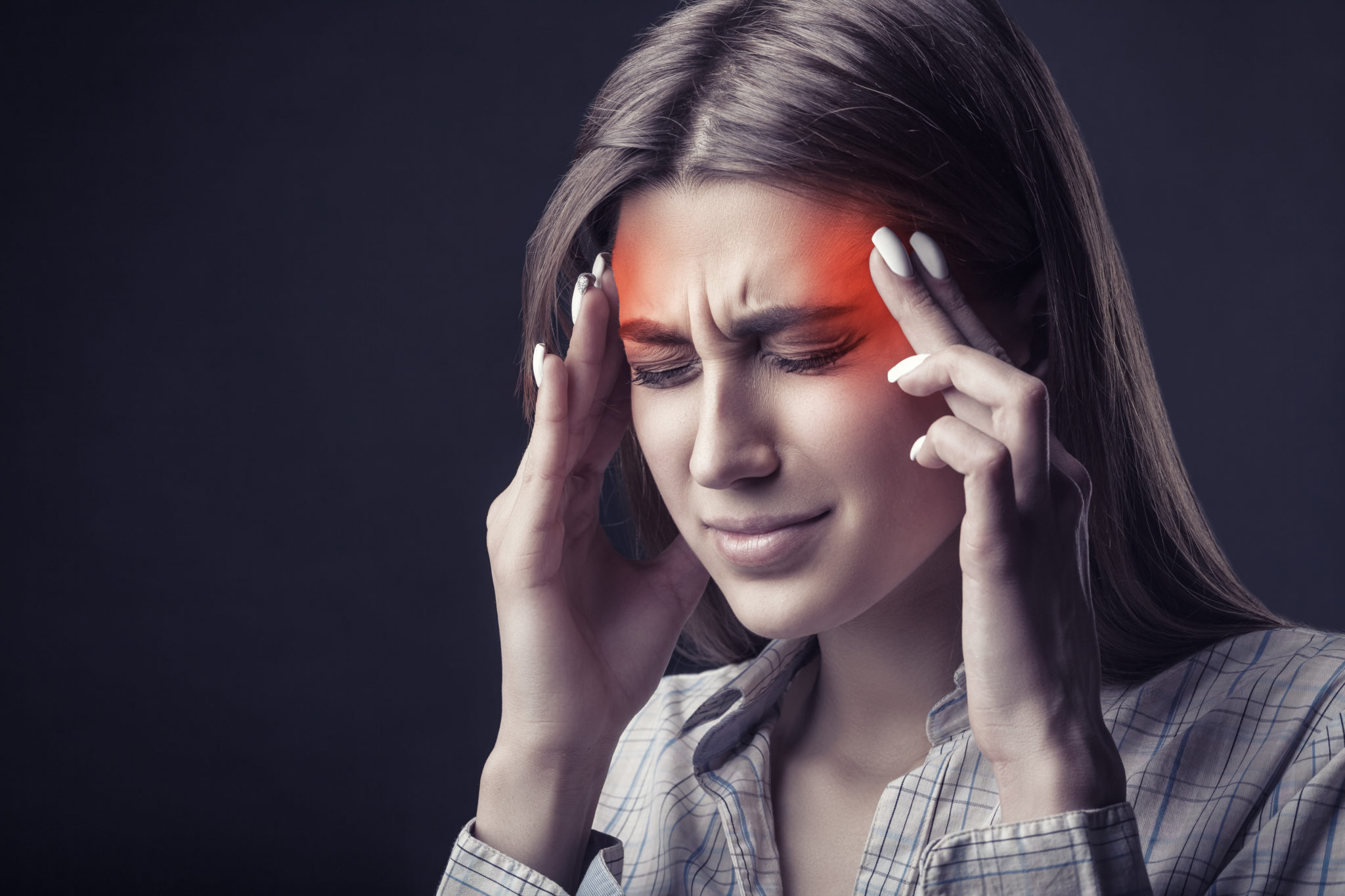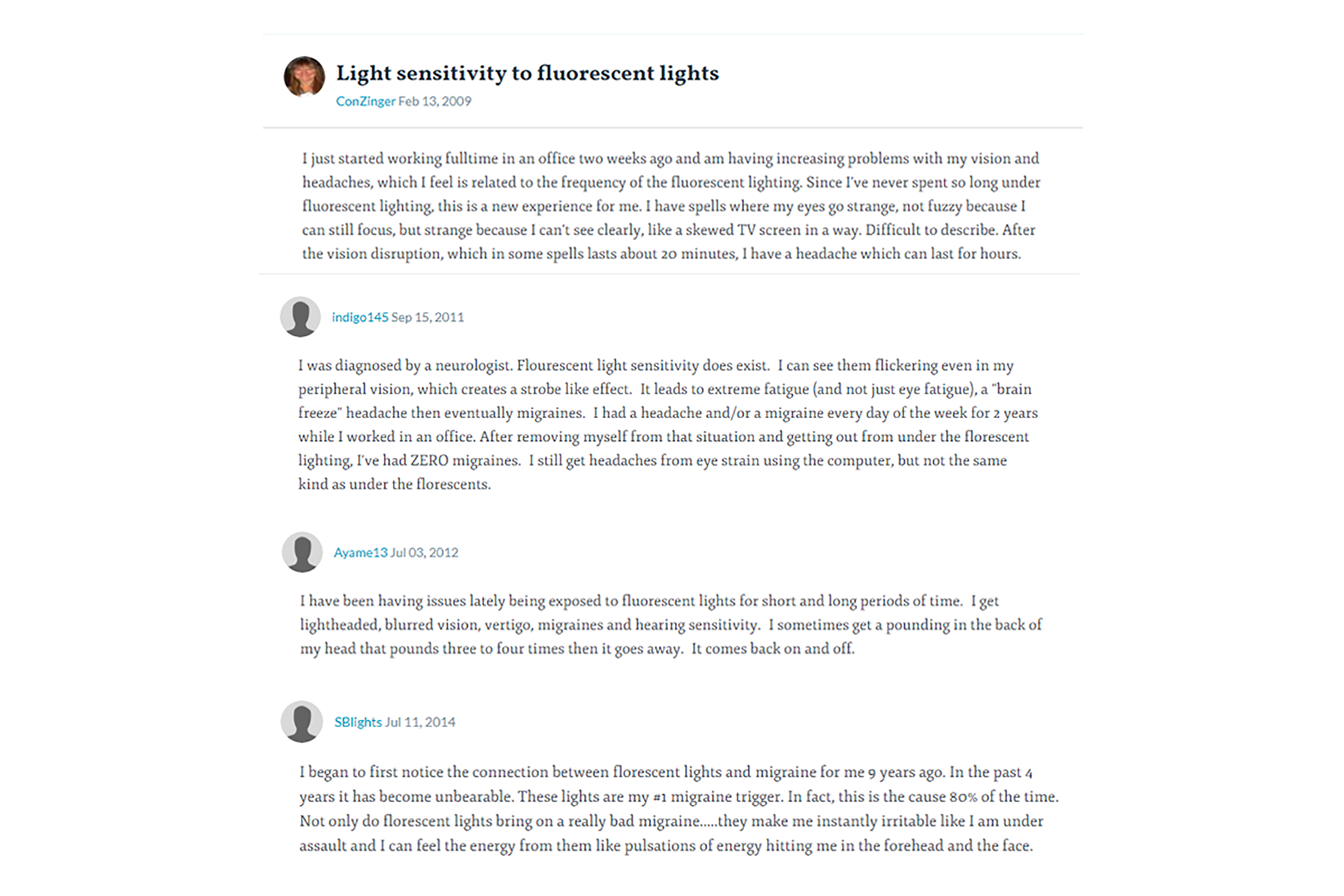
If you find that you’re experiencing migraines after spending time indoors—such as at work, at school or even at the grocery store—the lighting could be to blame. Light itself can cause or trigger migraines based on the brightness, intensity, the type of light, and especially if the light flickers. It’s estimated that 80-90% of people who suffer from migraines also experience painful sensitivity to light—a symptom known as photophobia. In fact, a survey of more than 4,000 individuals who experience migraines showed that 89% became sensitive to light during an attack. Migraine light sensitivity can produce a wide-range of symptoms that go well-beyond head pain and can linger for hours or even days after the episode.
The Type of Light Matters
While any source of light can cause photophobia, flickering lights are one of the most-likely ways to bring about a migraine—or worsen the pain in those suffering from photophobia—due to the high-contrast and visible pulsing of the light source. Bright light and the wavelength (or color) of light can also play a role. Blue-green light, for instance, causes photophobia more than other colors. Sunlight, glare, light from computer monitors, TV screens and smart phones, and fluorescent lighting, especially, can trigger migraine headaches; 67% of those surveyed said fluorescent lighting triggered or aggravated attacks every time.
Some symptoms of light sensitive can manifest immediately or within minutes of exposure; however, the onset of some of the emotional side effects (such as anxiety or feelings of depression) may be delayed. According to a 2012 study, there’s also evidence that conventional fluorescent lighting can have a negative impact on productivity, mood and alertness while increasing physical and mental fatigue. Other fluorescent light-induced symptoms include headache, nausea, dizziness, and eye strain.
Preventing Light-Related Migraines and Photophobia
People who suffer from migraines use pain management, preventative and rescue medications, but despite the many treatments options, less than half of individuals are satisfied with their treatment plan. The lack of effectiveness of traditional over-the-counter and prescription therapies lead many to invest in alternative forms of therapy. Aside from additional sleep and rest or the use of a dark, quiet room, even these methods provide little in the way of relief. So what can you do to help prevent a migraine?
Get rid of fluorescent lamps
Fluorescent lighting used to be considered the most efficient way to light a building. For decades, this exposed workers and building-users to all of their negative side effects. Properties that accompany fluorescents that can affect a person’s tolerance levels—and in some cases worsen photophobia and light-sensitivity—include: invisible flicker and high-levels of blue-green light. If the lighting in your work environment affects your performance, you’re not alone. Take a look at how some workers have described their issues with fluorescent lights:

Source: medhelp.org
A study completed by the American Society of Interior Designers showed that nearly 70% of workers are unhappy with the lighting in their workspace which can result in a 16% drop in productivity. Fluorescents and other harsh light sources can have a dramatic impact on how we feel and perform, especially in the workplace. Talk to your employer about how the lighting affects your health and productivity, and get HR and facilities maintenance involved, if appropriate. A great alternative to fluorescents are LED bulbs with warm color tones (5000K-5500K), along with increased natural light.
Take frequent breaks from screen time
People that spend all day looking at a computer screen or starring at their mobile device are at risk for Computer Vision Syndrome (CVS), also referred to as Digital Eye Strain. Eyestrain, headaches and blurred vision are all symptoms of CVS, and can also be caused by poor lighting (see above) and glare on digital screens. The American Optometric Association recommends giving your eyes a 15-minute break after two hours of screen time.
Reducing glare on computer screens
Eye strain, blurred vision and migraines can also be caused by the glare from walls, windows, and bright lights. If the glare is a result of natural light, closing the blinds to reduce the amount of light entering the room can help reduce glare on your computer screen. You can also purchase anti-glare screen covers to further reduce the amount of glare.
Gradually increase your light exposure
According to the American Migraine Foundation, sitting in a dark room or wearing your sunglasses inside actually makes you more sensitive to light over time. Keep your lights on and dim them to comfortable levels, if possible, to aid in alleviating the issue.
In Conclusion
If headaches are getting the better of you, consider changing your lighting system. It may be as simple as swapping your ballast to electronic from magnetic or switching from fluorescent to LED lighting. If you would like to learn how to identify a source of flicker or have any questions on a lighting upgrade, drop us a line at (608) 661-5555 or click here to schedule an appointment.

